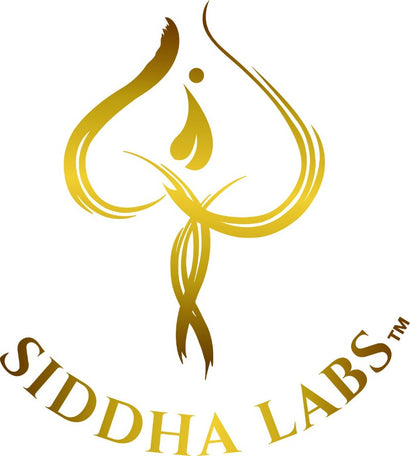The Truth about PMDD and How You Can Get Better Using Āyurveda

What comes to mind when we think of PMDD? While we can talk about symptoms that range from extreme mood changes, crying, heart palpitations, emotional outbursts, swollen breasts, hot flashes, dizziness, fainting, and a whole slew of others, the biggest factor that is a thorn in the side of those experiencing it is FRUSTRATION. Frustration and fear that they will be stuck with this disorder forever, especially PMDD.
Western medicine hasn’t figured out what exactly the underlying cause is, leaving women suffering from this condition feeling hopeless and depressed. I suffered from a similar sense of hopelessness after suffering from chronic back pain for 15 years that modern medical equipment and western physicians couldn’t correctly diagnose. Āyurveda did for me what western medicine couldn’t, and it can do the same for those suffering from this disorder! Let’s get rid of of that frustration and step into a paradigm that can explain PMDD simply, logically, and accurately.
What is PMDD from the Āyurvedic perspective?
The symptomatology of PMDD has an incredibly clear thread running through it, if you have the training to see it. No Āyurvedic practitioner is asking themselves, “Hmm, what is going on?”. Instead we are all saying, “Oh yeah, that’s Pitta!”. What is pitta, you ask, and how does it create such havoc in our bodies? Read on, sister hearts, and let illumination rather than confusion become your guide.
Pitta is one of the 3 doshas we use as diagnostic tools in Āyurveda, the medical science of India and oldest medical science in the world. Pitta is comprised of fire and water, an uneasy relationship from the get-go. Think about all the fire/water substances you can think of- Hard alcohol and gasoline are the first ones that come to my mind. What do we know about these substances? They are highly volatile, flammable, and potentially explosive, and so is pitta when it’s out of control. PMDD is a marker that pitta is overflowing within the body! It’s like taking a hose and turning it on full blast while blocking the end. The pressure builds and builds until the hose is on the verge of exploding, creating incredible tension on the surrounding structure.
What causes an increase of Pitta in the body?
Some pitta aggravating substances include onion, garlic, chili, hard alcohol, red wine, cigarettes, oily foods, sour foods, and salty foods. Pitta aggravating climates include those that are hot, like the desert, as well as those that have moisture in the air, as pitta is also watery. Ever notice how people in the South and in the Summer get hella agro? This is because their pitta is through the roof as pitta is increased by heat, and the reasons things calm back down in the fall is vāta comes in and relieves the build-up of heat through cooler temperatures. Such shifts allow your body the chance to relax after being put through pitta aggravation all summer long. The buildup of doshas seasonally is cyclical, with one relieving the other much like the doshas relieve each other in women’s monthly cycles.
Pitta is at its greatest concentration around the time of ovulation and right before you menstruate, which is why we see so many pitta type symptoms in the pre-menstrual phase of our cycle. What are some signs that Pitta is high? Emotional fluctuations, tender breasts, loose stools, acne, urticaria, irritability, intense thirst and/or hunger, excessive sweating, and strong body odor are just a few of the many examples. Pitta continues to increase until you start menstruating, which is usually when people suffering from this disorder experience some relief.
Why are these symptoms relieved at the onset of your menses? This is because another dosha, named Vāta, has now come into your body and allowed your body to RELEASE excess pitta through menstruation. Vāta is the ruler of all movement in the body, including that of excretion, in particular apāna vāyu, which is the down and out flow. Menstruation is the unblocking of the proverbial hose that allows your body to de-pressurize from all that fiery-water that has been building up.
So what can we do about all this? The first step is to start following a pitta-pacifiying diet and herbal protocol. I’m going to be up front- I don’t think this will be enough for most people to see real relief, but it is a necessary step that you will need to take sooner than later. What you really need is panchakarma, which is the deep cleansing therapy of Ayurveda. I’m not talking about colonics or intermittent fasting, I’m talking 3 complete weeks of a regimen in an Āyurvedic hospital setting with a qualified physician. You don’t have 3 weeks? Then you have to make them. It will feel expensive, but 3K and 3 weeks are more than worth avoiding 20 plus years of monthly hell for you and those around you.
What happens in panchakarma and why is it better than other treatments? Ayurveda recognizes that doshas build up over time and need to be removed through modalities that vary according to your constitutional needs and imbalances. It is the only way to really clean your body out, and takes immense care in preparing the body properly, something that is notably absent in most western “deep cleansing” health modalities. Āyurvedic cleanses are like washing the dishes after they have been soaked in hot water (when administered correctly)- the food debris comes off easily. Western cleanses are like scrubbing a burned pan in cold, soapless water- there is no prep of the body and it is jarring and abrasive to the system. The excess dosha is removed, and the body is given a chance to recover from the previous pressure of the build up.
What can you do if panchakarma is truly not an option? Here are some herbal recommendations to help you. Please note that this article and recommendations are not intended to diagnose or cure any disease and should be done under the guidance of your physician.
-Take ½ tsp aloe vera gel 3x daily after meals for 10 days leading up to your period along with ½ tsp of the following
Anantamula- 2 parts
Brahmi (Bacopa monnieri) 1 part
Musta – 1 part
That’s right. 30 doses. It may feel like a pain in the ass, but worth the investment when compared to the suffering of PMDD. Better yet, spend the money and time on a consultation with an Āyurvedic Practitioner, please reach out to me if you need recommendations.
PMDD is the accumulation of pitta within the body and can be effectively treated with an Āyurvedic protocol when correctly diagnosed. If you have been experiencing PMDD, you are NOT crazy! You are suffering from a pitta disorder which has been creating a ton of pressure and buildup inside your body. This is manageable. Many seemingly “chronic” conditions are easily explained from the Āyurvedic paradigm of health, and if you know anyone suffering from PMDD or who is living with someone who has it, please share this article with them. To learn more health tips, please check follow us on Instagram @siddhalabs and subscribe to my YouTube Channel! And be sure to subscribe to our mailing list for exclusive discounts and content!
Here is a link to my video on PMDD
Copyright Sarah Otto-Combs and Siddha Labs 2020
1 Response
Leave a comment
Comments will be approved before showing up.
Also in Unlock radiant wellbeing with the Āyurvedic perspective on food, self-care, and more!




Jannina Laine
August 27, 2020
Hello
Could you recommend any good panchakarma centers with experience in treatment of PMDD? I really have had enough.Greetings Jannina